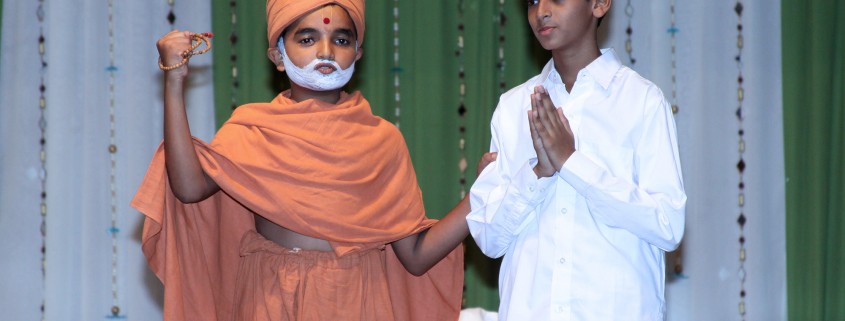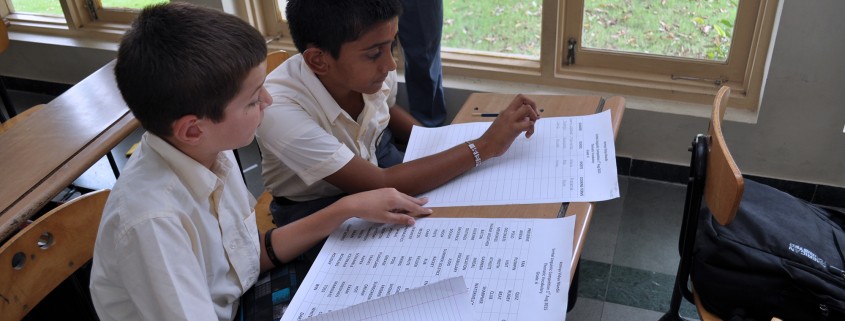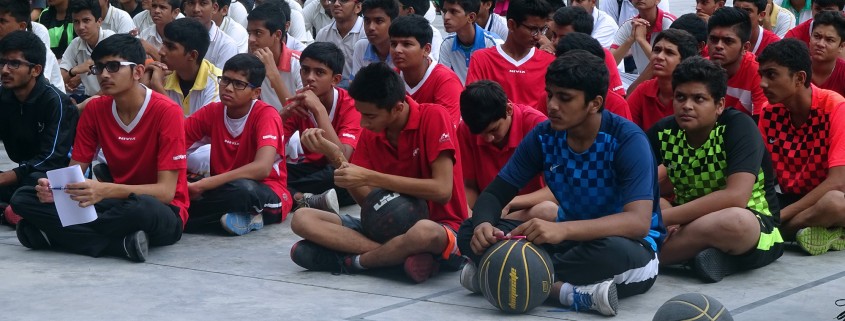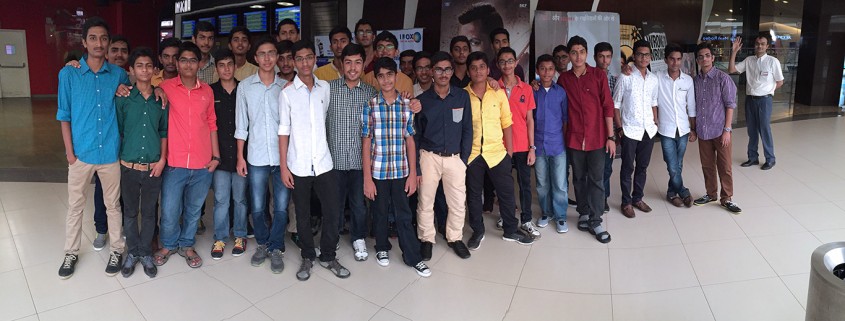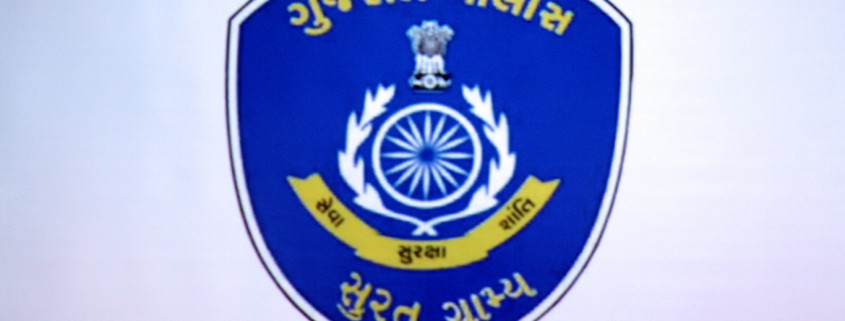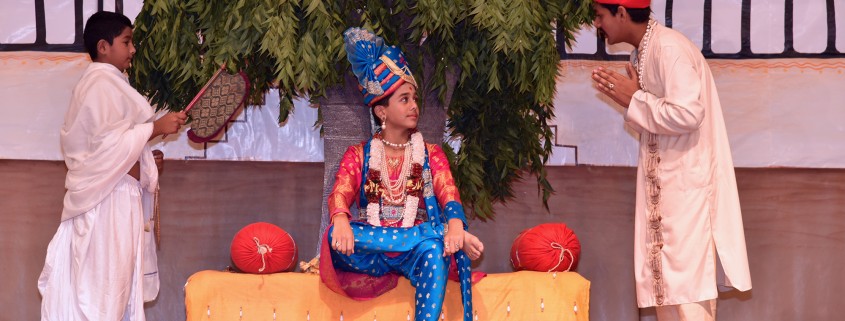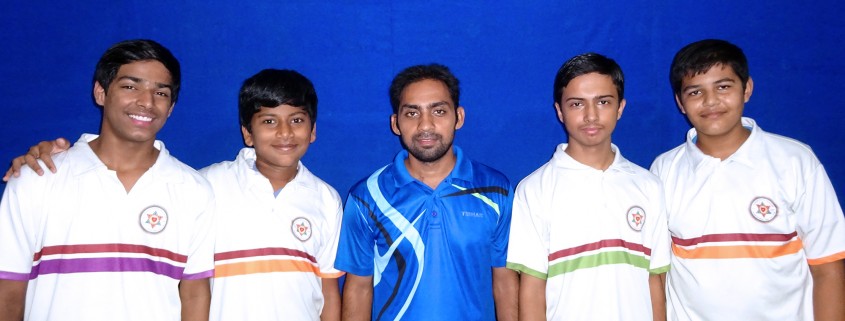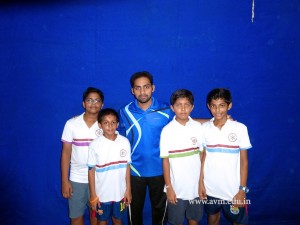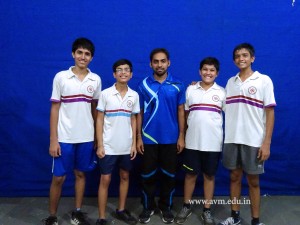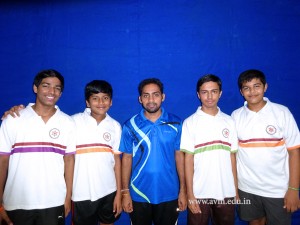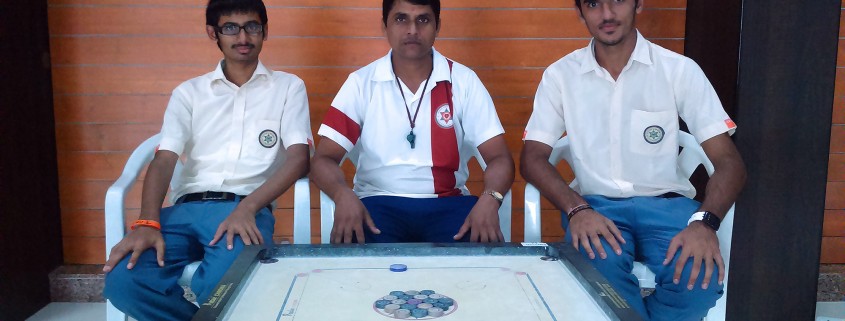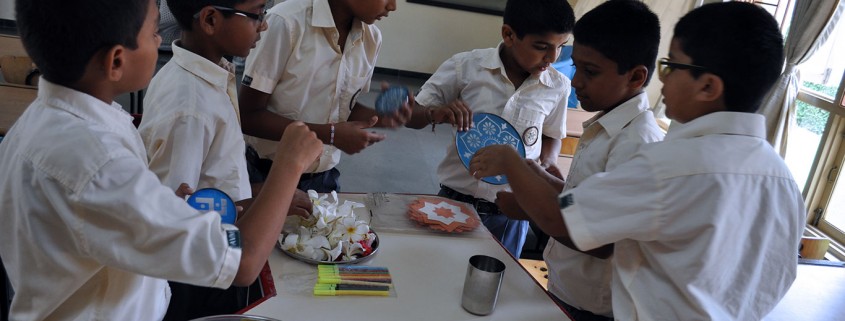Enhancing the Verbal and Linguistic flair of AVM students
/0 Comments/in 21st Century Skills, AVM Updates, Talent /by Seema JoshiA good show by AVM teams at the District Level Basketball Competition
/0 Comments/in 21st Century Skills, AVM Updates, Sports /by AVM TeachersAn Interactive Session on Road Safety
/0 Comments/in 21st Century Skills, AVM Updates, Value Based Education /by AVM Students“શ્રીજી ચરિત્ર વિહાર” week by Shivam House
/0 Comments/in 21st Century Skills, AVM Updates, Prayer, Value Based Education /by AVM TeachersAVM Champs shine again at the District Level TT Competition!
/0 Comments/in 21st Century Skills, AVM Updates, Sports /by AVM StudentsAtmiya Vidya Mandir participated in the District Level Table Tennis Competition 2015-16 for the under 14, 17 & 19 age categories, organised on the 24th of July 2015 at the Essar International School, Hazira. A total of 94 students participated from 12 different schools from Surat in a highly competitive tournament. The students of Atmiya Vidya Mandir showed their mettle as 7 students got selected for the State level competition.
In the under-14 category, about 45 students competed. From 4 of our representatives, Shreemadbhai K. Patel of class 8 managed to secure the 4th position and qualified for the State level competition. While Pranitbhai Choudhary of class 8 got the 7th position and is on standby for the State level competition.
In the under-17 category, there were as many as 32 participants from different schools. It was a very tough competition but Smithbhai K. Patel of class 10 played extremely well and won the 4th position and got selected in the State level competition.
The under-19 category, in which a total of 17 students participated, was the most successful for our school. All the four representatives of AVM gave an extra-ordinary performance and made our school proud by securing the top four positions. Dinalbhai Patel of 11 Commerce became the District Champion. Followed by Praneshbhai Tanna of 11 Science, Nikunjbhai Aggarwal of 11 Commerce and Madhavbhai Ladha of class 10: all four of them will make up the district team and represent Surat in the State level competition!
We congratulate all the participants and winners to make our school proud. A special mention to our school’s Table Tennis coach, Devang Sir, who works tirelessly to improve the games of all the players at school. So big congratulations to him for our resounding success!!
-AVM Sports Team
A promising debut by AVM at the District Level Carrom Competition
/0 Comments/in AVM Updates, Sports /by AVM Students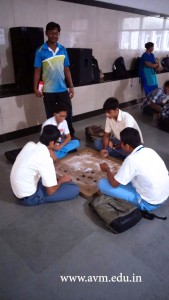 Team AVM participated for the first time in the District Level Inter School Carrom Competition on 23rd July at J. B. Diamond School in the under 19 category. Teams from as many as 12 schools participated in the competition. Atmiya Vidya Mandir was represented by Rahulbhai Patel, our school’s Sports Captain and Pramanikbhai Soni (both from class 10).
Team AVM participated for the first time in the District Level Inter School Carrom Competition on 23rd July at J. B. Diamond School in the under 19 category. Teams from as many as 12 schools participated in the competition. Atmiya Vidya Mandir was represented by Rahulbhai Patel, our school’s Sports Captain and Pramanikbhai Soni (both from class 10).
The first match for AVM was against Varad School from Bardoli which we managed to win very comfortably. Our team stepped up the performance as we entered in the quarter finals. The quarter final match was against Shree Vasishtha Vidhyalaya. Without much trouble again, we won that match and entered into the semifinal. The semifinal match was against G. I. P School. It was a difficult match against a good team but we showed grit to reach the final of the competition.
The final was against the team of the host school J. B. Diamond. The final, as expected, was very competitive. With the narrowest of margins, we lost against the host team. However, the loss in the final did not stop the boys from AVM to be selected for the state level competition!
Considering this was our first ever participation in an Inter School Carrom Competition, it was a proud moment for the school team to be selected for the state level.
-Pramanik Soni (Class 10)
2015-16 Leadership Seminar
/0 Comments/in 21st Century Skills, AVM Updates /by AVM Students22nd July’s sun rose with a different enthusiasm, looking forward to shine upon the leaders of tomorrow. A team of five students (Manavbhai Patel, Abhishekbhai A Patel, Nimitbhai Patel, Keyurbhai Rana and Yathanshbhai Joshi) led by Kshitij Sir reached Shri Vasishtha Vidhyalaya for a two day Leadership Seminar organized by the M. R. Pai Foundation, Mumbai.
The Seminar started with a small inauguration programme in which the students of Vasishtha Vidhyalaya sang a melodious song. Soon after the inauguration programme, we were divided into two groups and each group had different sessions on each day. The sessions were conducted by Mr. Vivek Patki and Mr. Sachin Kamath. The sessions on day one covered topics of Communication Skills, Self Esteem and Goal Setting. The lunch breaks and other short breaks in the middle of each session helped us make new friends.
The next day, everyone was eager to reach Vasishta Vidyalaya as soon as possible because there was a lot to learn. It was the last day of the camp so everybody was determined to grasp whatever was delivered. The second day was more interactive as it included more activities. The sessions on the second day covered Time Management, Self-Management and Team Building. These activities helped us to learn how to work as a team and how to lead effectively.
The camp ended with vote of thanks and distribution of certificates to all the participants. Moreover, anyone who wanted to share their opinions, suggestions and learning were welcome. The seminar ended with a happy and a sad note; happy because we learnt many good things and sad as we had to leave our newly made friends.
-Abhishek Patel and Manav Patel (11th Commerce)

